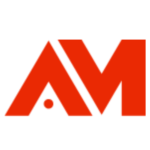
De-glamourizing Building an Audience. Building a brand isn’t “sexy”. Generating leads or traffic isn’t “cool”. Neither is building an audience. It seems all glamourous on the outside. Then why are we talking about this? Because we are slowly stepping into a creator economy — one made up of platforms, enabling people to live off their dream jobs!
The battle then becomes for catching attention or building a loyal audience to gain an advantage.
But building an audience is hard. It is much like running a business. Think about the first sale you made. It could be anything from a pencil, a pen, a packet of fries, or a SaaS product. More often than not, you will realize it was a relationship sale. It would surely have been more consultative than transactional. Similar is the case with building audiences. The first few people following you (or signing up) will be because of a value add. It will never be transactional.
A lot of people confuse this with money. We, as a society have been programmed to exchange money for value add. In the case of audiences, this currency is time (at least to start off). Why should an individual give time to your content or to what you have to say? Because you can add value.
The most important factor for building an audience (or even a business for that matter) is finding your niche. If you are starting a restaurant, you have to make a certain dish as your specialty. Once people come in, you call sell them the sides too, and thereby grow your menu. It is much the same with building an audience. You have to find your niche — the area that you know best about and one that you love talking about — your special dish. Once people get interested and they are enough in number, you can expand your menu (or talking points).
Interestingly, adding value alone is not enough. You need to know where to find the people who may need your insights or knowledge. In this case, the right platform.
Audiences are built on the back of two kinds of platforms — Open and Owned.
Open Platforms –
Owned Platforms –
- Personal Website
- Podcast
Open Platforms are like the Stars on the BCG matrix. They help you grow your audience. They help you reach the unchartered territory. But they require a lot of input — in effort and sometimes in money.
Owned platforms on the list above are like the Cash Cows on the BCG Matrix. They will keep you engaged with your audience and make sure you are top of mind. They will always deliver more value for less input.
What then is the trick?
The one philosophy that has worked for the best creators of this generation is — Grow your audience on open platforms. Build relationships on owned ones.
Never allow an open platform to control your reach. Ex-President of the United States Donald Trump is a classic example. He had a massive following across social media (especially Twitter) but since the control was not in his own hands, he lost the audience. Had he converted this audience onto owned platforms, imagine what could have been possible? The world might just have been a different place.
Now coming to the next and rather important question — do ads help? The short answer is yes (if you have money).
The longer and more complex answer is, you should know who to reach out to. You cannot be talking about English Football and reaching out to a middle-aged female from Maharashtra. The person you are reaching out to should be well versed or interested in your domain of expertise, and willing to subscribe. The bottom-line again is, he/she should be willing to pay you in time to read/watch your content. Only then will you be able to charge him in dollars in the future.
The audience you have access to are the warmest leads you can ever get. They want to listen to what you say. They value your opinion and your thought process. Your word to them will carry weight.
Building an audience is often confused as just an art. It also has science at play. The job of an artist is to put out his vision of the world, whether on a canvas or on paper in cinematic viewing. The job of a scientist is to analyze and then put out what will help the larger audiences in living their lives in a better way.
If you can help people in easing up their job and in effect not lose the vision of the artist, you will surely build a solid audience base. And having a loyal audience is priceless.
Conclusion
In the creator economy, building an audience isn’t glamorous, but it’s essential. It’s about providing value, not just transactions. Find your niche and offer something valuable to gain followers. Open platforms like Facebook reach a broad audience but demand effort. Owned platforms like email offer lasting engagement. Grow on open platforms, build relationships on owned ones. Ads can help if targeted to your niche. Building an audience is both art and science. Provide value while staying true to your vision. A loyal audience is the ultimate reward in the evolving creator landscape.






